A good deal of splashing sounds coming from the pond got my attention. I thought maybe one of the neighbor kids had fallen in - it’s been known to happen. As I looked out, it was the dozen or so Mallard ducks that have been hanging out with us for the past week. We had become accustomed to the rough mating-season battles among the drakes (males) that create quite a water fight, but these actions were not the same. Each individual duck was shaking out every feather it could. Stretching neck and wings to their extent and then shuddering right down to their tail feathers. They would do a rapid underwater dunk and pop out to bob and stretch again. Must be a ducky spa day, I thought, then I saw the masses of feathers. Floating on the water, covering the shoreline of the pond, the path up toward the house, everywhere the ducks meandered there were white, downy feathers tumbling in the breeze. A duck dance to get those loose, niggly, wiggly, pokey feathers loose. They would then hop up to our little island bridge to dry off with a great deal of grooming with their bills. Pull, tug, shake, do it again. Those feathers won’t last long on the ground, they get scooped up by the squirrels and other critters to make their little homes cozier.
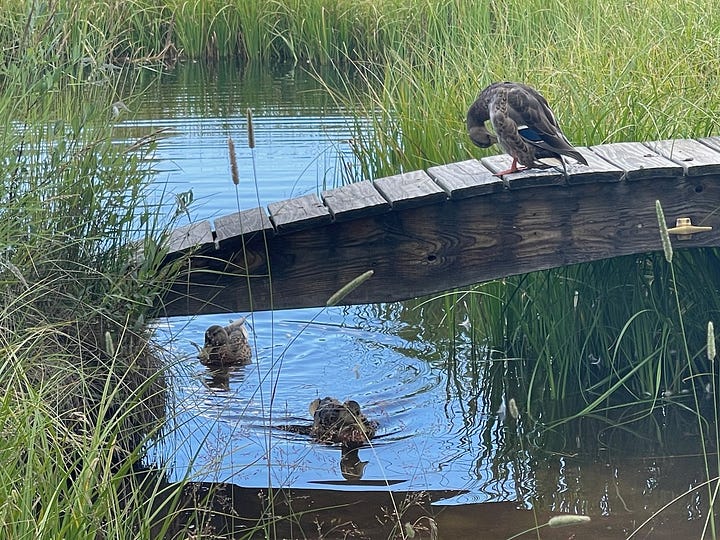
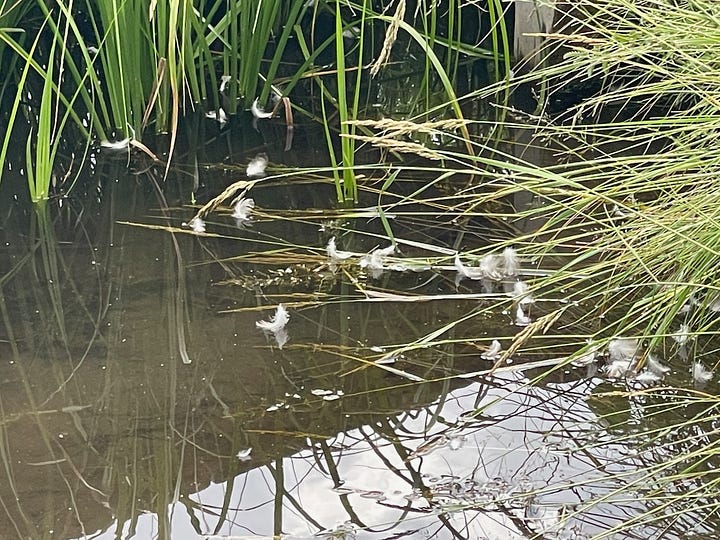
Like all living things, a duck’s life has a yearly pattern to be followed. For wild mallards, after the nesting season of late Spring to mid-summer, the molting season begins. Lasting 3-5 weeks the ducks lose their worn-out feathers to gain a fresh set, ready for Autumn migration. But before migration, it’s transformation. The green to purple iridescent head feathers of the drakes are shed for a nice camo brown. This is called the Eclipse molt. It’s much harder to tell the males and females apart in this season. The drake even loses his curly little tail feather. Why camo? In this process of molting, the flight feathers are shed as well. Until the strong new flight feathers are fully in place, the duck has very limited flight abilities, more of a glorified hop. This season makes for easy pickings for predators who are working to fatten up for winter. It’s a good time to hide out, go undercover, be un-seen or be lunch. There is also protection in numbers, this is when you will see the largest groups of ducks together. We’ve had over 40 at a time in our small pond, but this is mainly mid-August through October before they migrate and the pond freezes over.
Along with the tickly, loose feathers to irritate them, the ducks experience the uncomfortable feather-growing process. Stiff, flight feathers are an achy growing process. If you find that the ducks (geese and other waterfowl also!) at your local pond or park seem crabby, well, remember getting your molars in or growing pains as a kid? If you are curious about just how these feathers grow, here is a fascinating video about it. The entire molting process is a physically taxing time, and you may see the ducks sleeping more than usual. They need a diet dense in calories and protein during this time. If you feed ducks, and they do love a free and easy meal like all creatures, refrain from the nutritionally weak bread and corn, they would fair better with mealworms, crickets and other insects, pond invertebrates, aquatic plants, and earthworms, and, of course, these are to be readily found naturally around them already.
Soon, the ducks are ready to move on to their winter locations. We see many of the same ducks returning in the spring to start the cycle over again.
September in the high country, and the land is rapidly showing signs of the change of seasons in the yellowing of the pond grasses and small patches of Aspen leaves showing their gold tones. The squirrels are ‘corn-cobbing’ pine cones as fast as they can for their winter storage and woolly-bear caterpillars are frequently seen, they are skinny here with only a narrow brown band, an indicator more of last winter than of the winter to come. The sun goes down early and there is an anxious feel to catch it all before it’s gone. Enjoy an Autumn wander, watch the ducks, and hunt for caterpillars, savor it all.
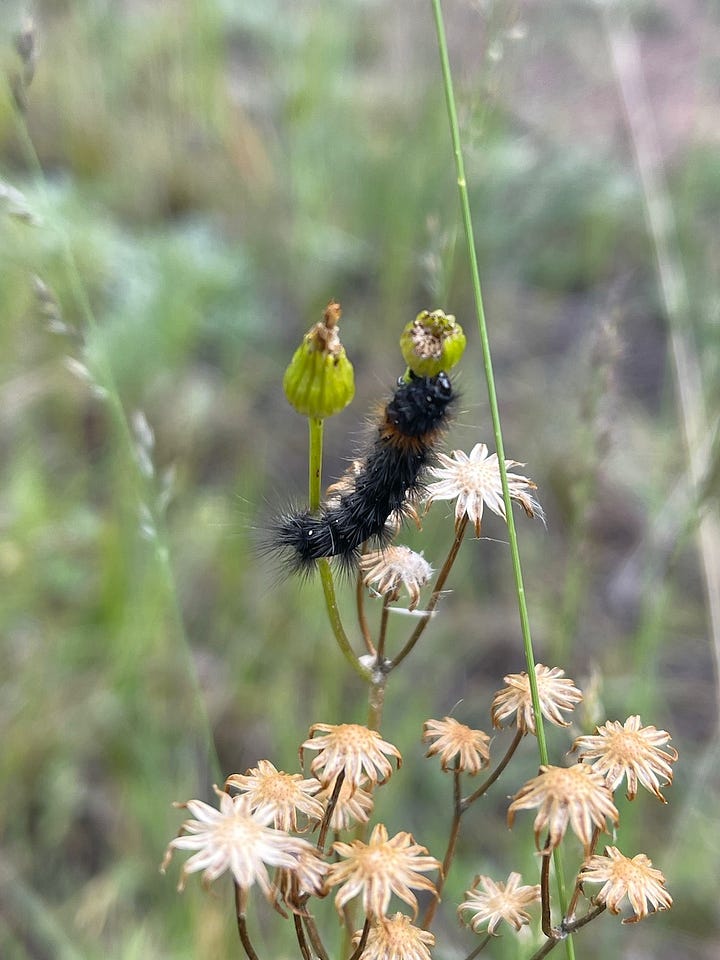
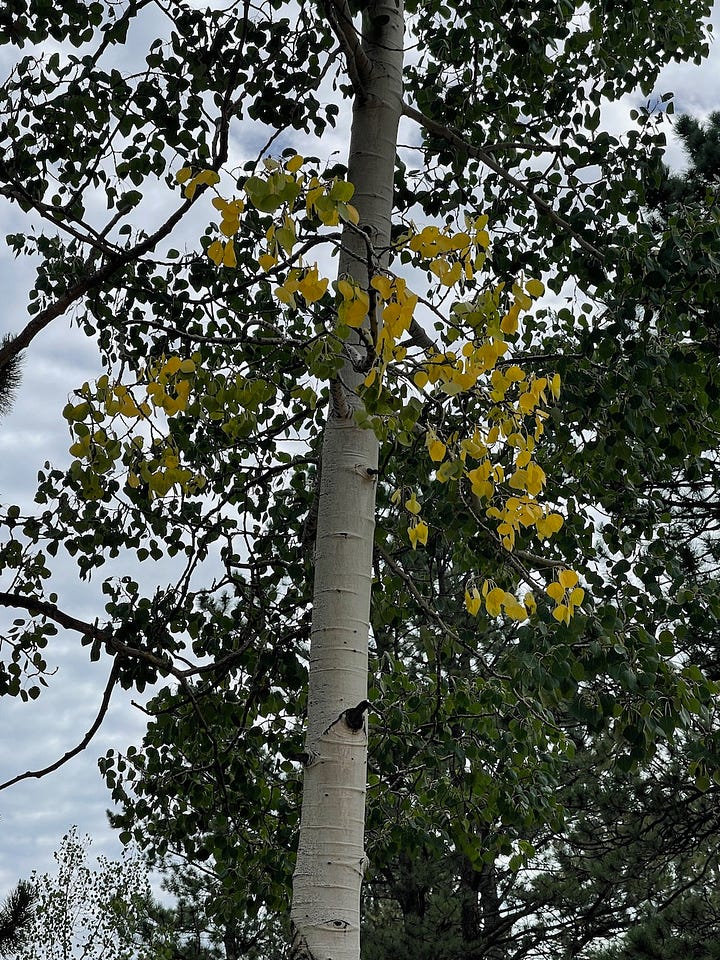
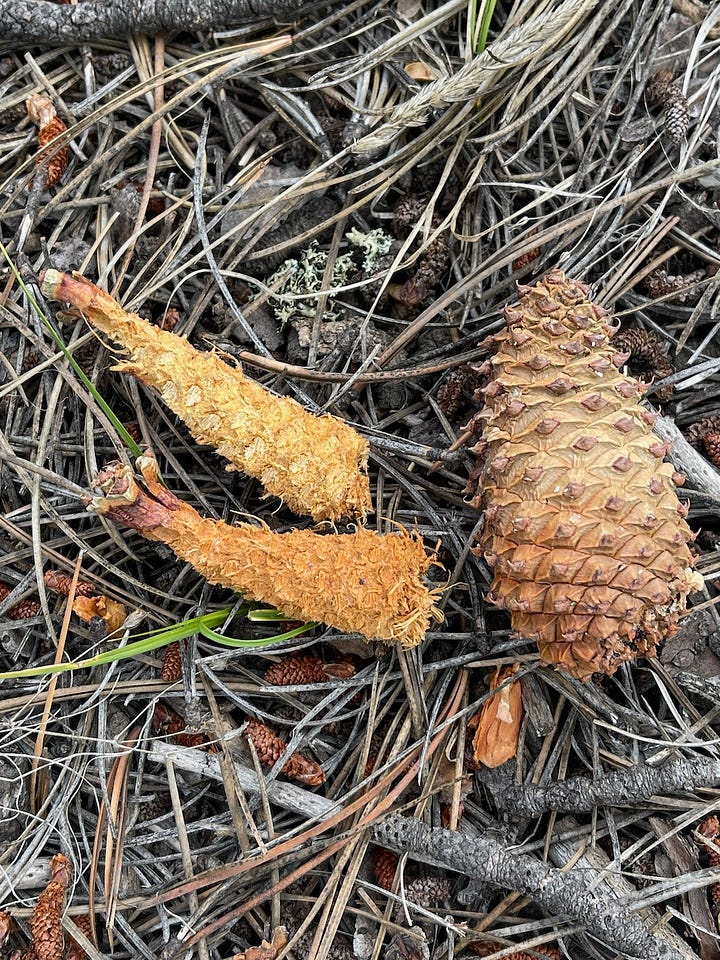

- Note: this was first published in August 2022, before I was on Substack. There wasn’t many readers who saw it back then. It’s a timely re-post.
Sources:
• https://www.ducks.org/conservation/waterfowl-research-science/understanding-waterfowl-the-amazing-molt
• https://www.tyrantfarms.com/duck-molting-what-when-and-why-it-happens
You can find The Abert Essays, along with my ‘Encounters’ posts, on my social media sites:
3 Likes
·


